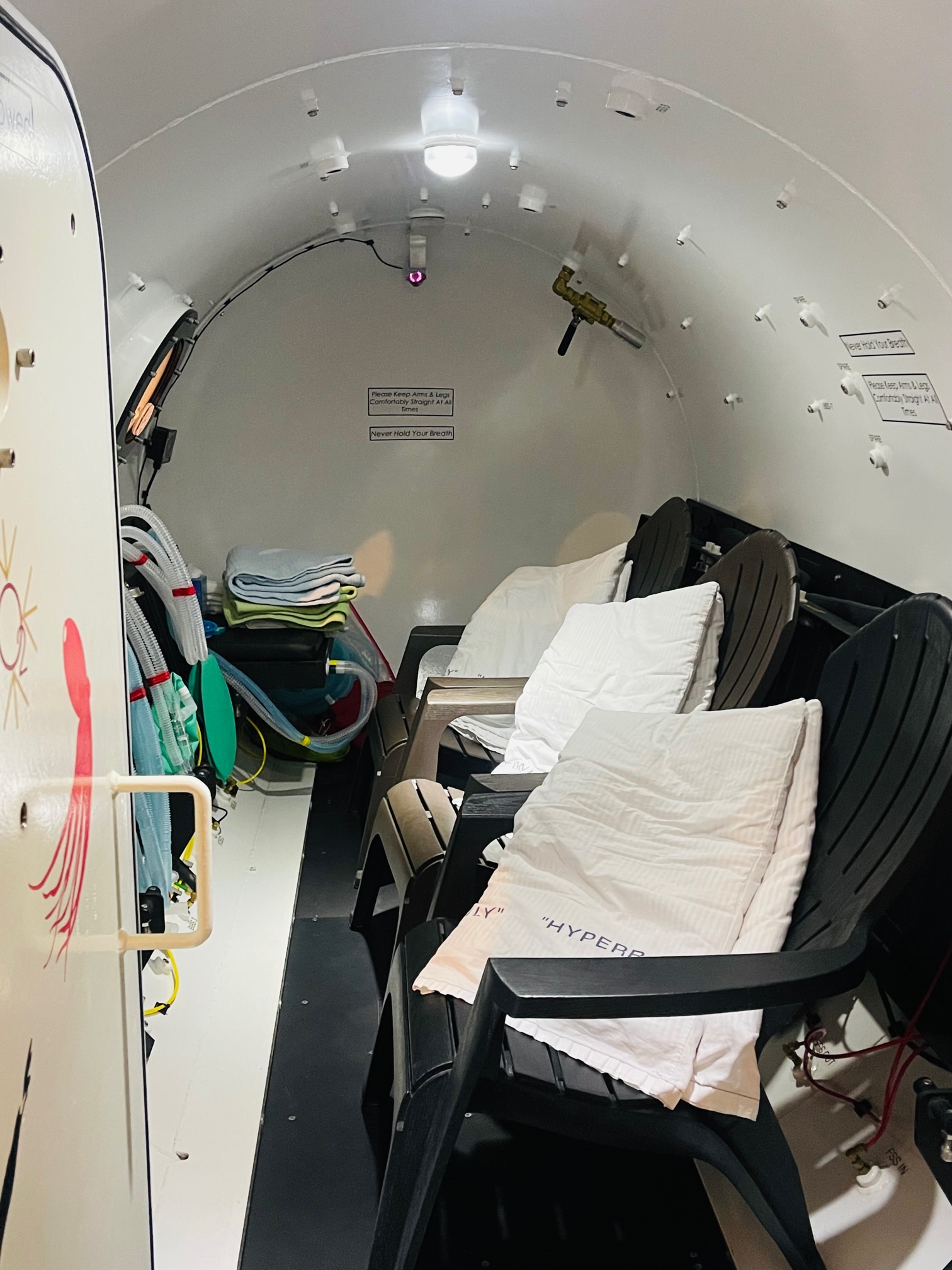Oxygen is a colorless, odorless gas that makes up about 21 percent of the atmosphere. It is essential to life for two reasons: Oxygen is one of the body’s basic building blocks. All of the body’s major components, water, protein, carbohydrate and fat contain oxygen. Oxygen helps bring about certain chemical reactions within the body that result in energy production. Energy is needed for functions such as circulation, respiration and digestion. Energy is also used to maintain a constant body temperature.

Frequently Asked Questions:
How does HBOT allow more oxygen to be absorbed into the bloodstream and tissues?
Blood is made up of three main components: white blood cells that fight infection, red blood cells that carry oxygen, and plasma, the fluid that carries both kinds of cells throughout the body. Under normal circumstances, only the red blood cells carry oxygen. However, because HBOT allows more oxygen into the body under pressure, oxygen dissolves into all of the body’s fluids, including the plasma, the lymphatic fluids, and the cerebrospinal fluids surrounding the brain and spinal cord. These fluids can carry the extra oxygen even to areas where circulation is poor or blocked, either by trickling past the blockages or by seeping into the affected area. This extra oxygen helps in the healing process and enhances the white blood cells’ ability to fight infection. It can promote the development of new capillaries, the tiny blood vessels that connect arteries to veins. It also helps the body build new connective tissue. In addition, HBOT helps the organs function in a normal manner. Recent studies from the University of Pennsylvania School of Medicine are showing that a typical course of HBOT increases by eight-fold the number of stem cells circulating in a patient’s body. Stem cells are crucial to injury repair.
What are the Properties of HBOT
- Oxygenates, repairs and regenerates tissue.
- Fights infection
- Grows new capillaries
- Increases stem cell production
- Highly reduces the “inflammatory reaction”
What is HBOT?
Hyperbaric Oxygen Therapy “HBOT” is a medical treatment in which a person breathes 100% oxygen while under increased pressure. Basically, the patient is breathing oxygen at levels far greater than that which is found at a normal room atmosphere. HBOT allows more life-sustaining oxygen to be delivered to the tissues and organs. This increase of oxygen at the cellular level accelerates the healing processes and assists in the recovery of numerous conditions. “Hyper” means increased and “baric” relates to pressure.
What is a treatment like?
A HYPERBARICS of Sun Valley treatment is given in a mono-place (single occupancy) chamber. During treatment the patient can relax by watching a movie, listening to music or just rest. It is a non-evasive, safe method of administering pure oxygen at greater than atmospheric pressure to a patient in order to improve or correct certain conditions. Providing oxygen in a pressurized chamber allows the delivery of 10-15 times more oxygen than if it was delivered at sea level or at normal atmospheric pressures.
Is HBOT safe?
HBOT is SAFE. Side effects are minimal and rarely last a long time. Hyperbaric Oxygen is not always a cure but it has been clearly demonstrated to dramatically increase immune capabilities, assisting patients with problems ranging from chronic wounds to complex disabilities and neurological impairment. Taking this information into account there are currently 16 approved indications in America.
What are the FDA approved uses for HBOT?
- Air Gas embolism
- Brown recluse spider bites
- Carbon Monoxide or Cyanide poisoning
- Gangrene
- Crush injury, compartment syndrome and other acute traumatic ischemias
- Decompression sickness
- Enhancement of healing in selected problems wounds such as: Diabetically derived illness, such as diabetic foot, diabetic retinopathy, diabetic nepropathy.
- Exceptional blood loss (anemia)
- Intracranial abscess
- Necrotizing soft tissue infections (necrotizing fascilitis)
- Osteomyelitis (refractory)
- Delayed radiation injury ( soft tissue and bony necrosis)
- Skin grafts and flaps (compromised)
- Thermal burns
- Central retinal artery occlusion
- Idiopathic sudden sensorineural hearing loss

